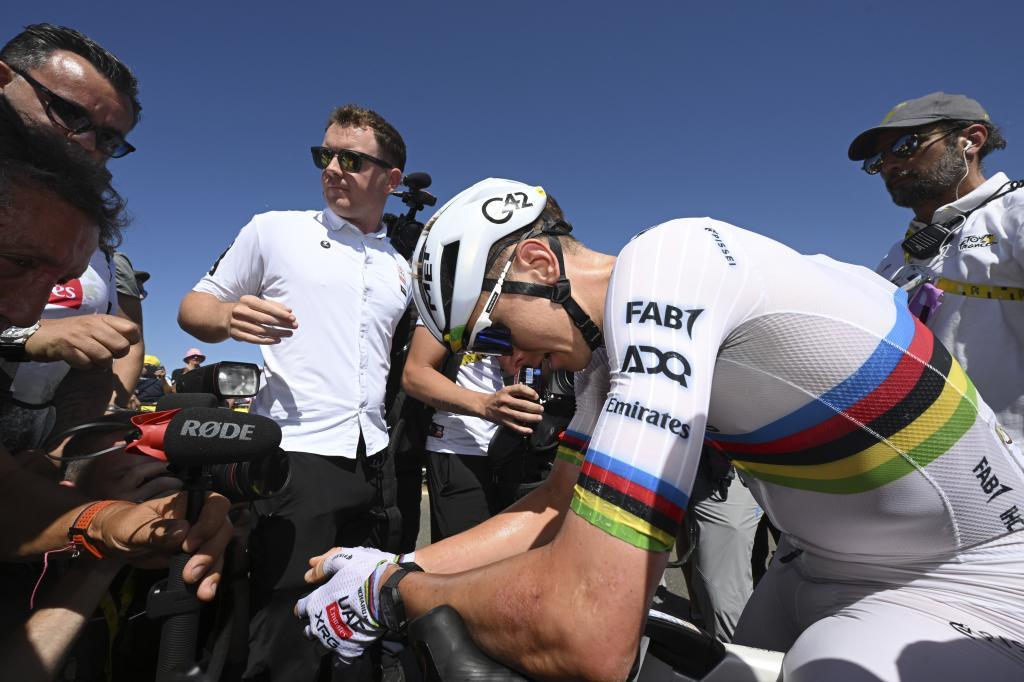Kilian Jornet returns home after an intense training session and instead of taking a shower, he does the opposite: he enters a room that feels like hell. In a closed room, he turns on a heater, activates the humidifier, puts on a couple of jackets and starts pedaling on a stationary bike. At almost 40 degrees, within a couple of minutes, he is sweating profusely. But he endures. And endures. And endures. And endures. He endures until after about an hour he is dehydrated, and only then does he get off, leaves the room, undresses, and drinks liters and liters of water. He has just completed a heat training session, the latest trend in high performance.
Tadej Pogacar and most of the cycling peloton, numerous marathon runners, and even fighters like Ilia Topuria are already implementing it. If years ago there was the revolution of training at altitude, where air is scarce, now comes the revolution of training in heat, where water is scarce.
There are two main benefits, one logical, well-studied, and the other previously unknown. The first has no secret: heat training is used to adapt to heat. According to several studies, the ideal temperature for sports is between three and 10 degrees, and the higher the thermometer goes, the worse. Performance can drop by up to 20%, a significant decrease in elite sports. That's why preparation is necessary.
"Since the 1980s and the studies of González Alonso, the best athletes have worked to acclimatize to heat. Many events, such as the Tour de France, the Olympics, or the World Athletics Championships, take place between July and August, and there has been a lot of research around them," explains Carles Tur, a physiologist, coach responsible for the Q36.5 cycling team, and trainer for the Spanish Sailing Federation (RFEV). Before the Tokyo Olympics, for example, sessions in the heat chamber of the High-Performance Specialized Center in Santander led athletes like Nico Rodríguez and Jordi Xammar to medals in the oven-like conditions of Enoshima Bay.
Heat adaptation allows athletes to sweat more and in more areas of the body - it can go from 70% to 90% of the skin - thus better regulating internal temperature. Sweating a lot may be uncomfortable in daily life, but it is a blessing in competition; those who sweat more take longer to dehydrate and are less exposed to hitting the wall or heatstroke.
The unknown benefit: increased oxygen
But heat training has another virtue that was not known until a few years ago. In addition to helping you compete in summer, it increases the oxygen in your blood. "When you rehydrate after severe dehydration, plasma increases, blood dilutes, and the body falsely feels it has less oxygen transport capacity. That's why the kidney sends a signal to the brain to release endogenous EPO naturally and legally. This raises hemoglobin, increases oxygen transport capacity, and therefore enhances the athlete's power," explains Tur, admitting that it's not easy for cyclists or runners to apply these theories. Because it's not enough to go out for a run, let alone go cycling in the middle of a hot day.
The Core brand suit for 'heat training'CORE
For the benefits to be real, "three to five sessions weekly of approximately one hour each for five weeks" are needed, and it would be best to do them in a closed environment. "In outdoor training, even at 35 degrees, the wind can eliminate up to 70% of your body heat. It can be useful and generate adaptation, but the ideal is to create those conditions artificially," proclaims the physiologist, mentioning active and passive techniques.
Among the passive methods are the sauna or hot water baths, and among the active ones are heat chambers or so-called painter suits. In recent years, Spanish High-Performance Centers have installed Thermotron climate chambers, and cycling teams have devised their own methods: cyclists use rollers inside a tent with the heater on full blast or wear plastic suits. This way, technicians can monitor dehydration to prevent surprises and start rehydration immediately. The theory suggests that it's ideal to drink 150% of what was lost, meaning up to three liters of water with the necessary sodium.
"We have never regretted heatstroke, although sometimes we had to stop due to dizziness. When we do these sessions, we have skin temperature and internal temperature sensors, but it is very important to look at the athlete's face and see how they are doing. There are signs of problems, like when sweating stops. We need to be close," concludes Carles Tur, who is currently preparing for the Tour of Spain with his team's cyclists, who will be ready even if the thermometer mercilessly punishes them.
